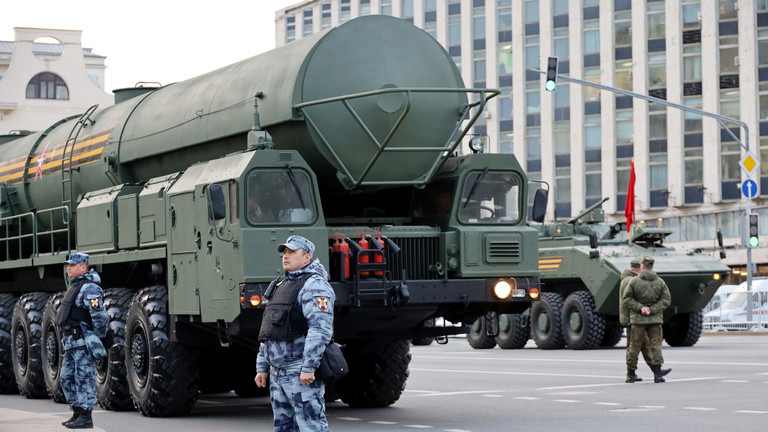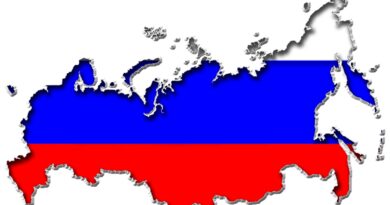It’s time for Russia to give the West a nuclear reminder
Guest Post by Dmitri Trenin

Strategic stability is usually understood as the absence of incentives for a nuclear-armed power to launch a massive first strike. Typically, it’s viewed primarily in military-technical terms. The reasons why an attack may be contemplated are usually not taken into account.
This idea emerged in the middle of the last century, when the USSR had achieved military-strategic parity with the US and the Cold War between them had entered a “mature” phase of limited confrontation and some predictability. The solution to the problem of strategic stability was then seen in the constant maintenance of contacts between the political leadership of the two superpowers. Which led to arms control and transparency in arranging their respective arsenals.
However, the first quarter of the 21st century is ending in conditions very different from the relative international political stability of the 1970s. The US-centric world order established after the end of the Cold War is being seriously challenged and its foundations are visibly shaken. The global hegemony of Washington and the position of the collective West as a whole is weakening, while the economic, military, scientific and technological might and political importance of non-Western countries –first and foremost China, but also India– are growing. This is leading to a deterioration in relations between the US and other power centers.
The two largest nuclear powers, Russia and the US, are in a state of semi-direct armed conflict. This confrontation is officially regarded in Russia as an existential threat. This situation has become possible as a result of the failure of strategic deterrence (in its geopolitical dimension) in an area where Russia’s vital interests are present. It should be noted that the main cause of the conflict is Washington’s conscious disregard –for three decades now– of Moscow’s clearly and explicitly expressed security interests.
Moreover, in the Ukrainian conflict, the US military and political leadership has not only articulated, but has publicly expressed, the mission of using its proxy to inflict a strategic military defeat on Russia, despite its nuclear status.
This is a complex undertaking in which the collective economic, political, military, military-technical, intelligence and informational capacity of the West is integrated with the actions of the Ukrainian armed forces in direct combat against the Russian army. In other words, the US is trying to defeat Russia not only without using nuclear weapons, but even without formally engaging in hostilities.
In this context, the declaration by the five nuclear powers on January 3, 2022, that “nuclear war should not be waged” and that “there can be no winners,” seems like a relic of the past. A proxy war between the nuclear powers is already underway; moreover, in the course of this conflict, more and more restrictions are being removed, both in terms of the weapon systems used and the participation of Western troops, as well as the geographical limits of the theater of war. It is possible to pretend that a certain ‘strategic stability’ is being maintained, but only if, like the US, a player sets the task of inflicting a strategic defeat on the enemy at the hands of its client state and expects that the enemy will not dare to use nuclear weapons.
Thus, the concept of strategic stability in its original form – the creation and maintenance of military-technical conditions to prevent a sudden massive nuclear strike – only partially retains its meaning under current conditions.
Strengthening nuclear deterrence could be the solution to the real problem of restoring strategic stability, which has been seriously disrupted by the ongoing and escalating conflict. To begin with, it is worth rethinking the concept of deterrence and, in the process, changing its name.
For example, instead of a passive, we should talk about an active form. The adversary should not remain in a state of comfort, believing that the war he is waging with the help of another country will not affect him in any way. In other words, it is necessary to put fear back into the minds and hearts of the enemy’s leaders. The beneficial sort of fear, it’s worth stressing.
It must also be recognized that the limits of purely verbal intervention have been exhausted at this stage of the Ukrainian conflict. Channels of communication all the way to the top must remain open around the clock, but the most important messages at this stage must be sent through concrete steps: doctrinal changes; military exercises to test them; underwater and aerial patrols along the coasts of the likely enemy; warnings about preparations for nuclear tests and the tests themselves; the imposition of no-fly zones over part of the Black Sea, and so on. The point of these actions is not only to demonstrate determination and readiness to use available capabilities to protect Russia’s vital interests, but –most importantly– to bring the enemy to a halt and encourage it to engage in serious dialogue.
The escalation ladder does not end here. Military-technical steps can be followed by real acts, warnings of which have already been given: for example, attacks on air bases and supply centers on the territory of NATO countries, and so on. There is no need to go further. We simply need to understand, and help the enemy to understand, that strategic stability in the real, not narrow, technical sense of the word is not compatible with armed conflict between nuclear powers, even if (for the time being) it is being waged indirectly.
It is unlikely that the enemy will accept this state of affairs easily and immediately. At the very least, they will need to realize that this is our position and draw the appropriate conclusions.
It is time for us to start revising the conceptual apparatus we use in matters of security strategy. We talk about international security, strategic stability, deterrence, arms control, nuclear non-proliferation and so on. These concepts emerged in the course of the development of Western – mainly American – political thought and found immediate practical application in US foreign policy. They are based on existing realities but adapted to American foreign policy objectives. We have tried to adapt them to our needs, but with mixed success.
It is time to move on and develop our own concepts that reflect Russia’s position in the world as well as its needs.




